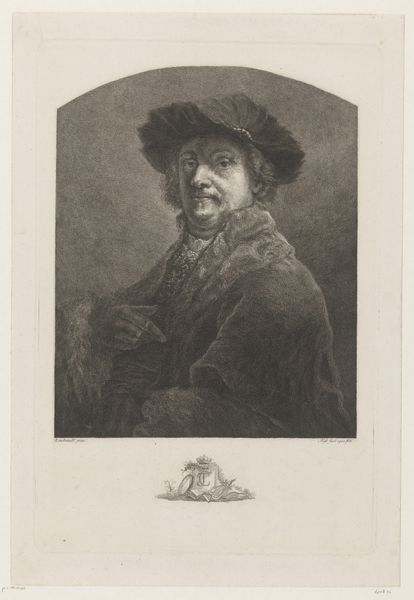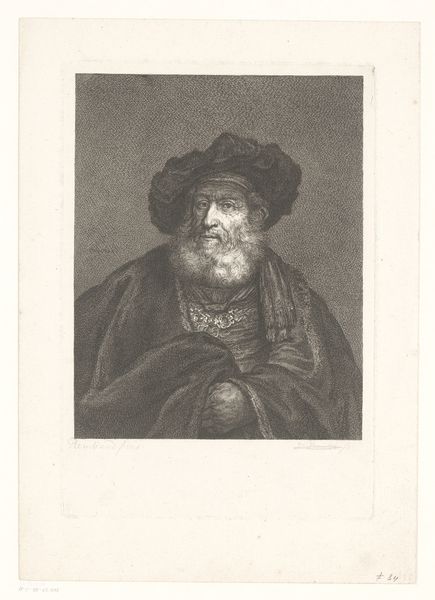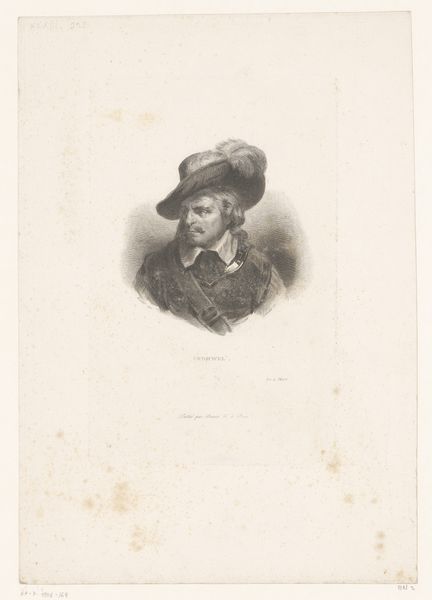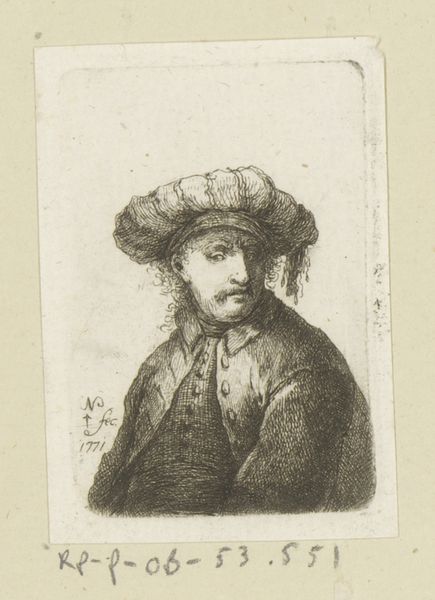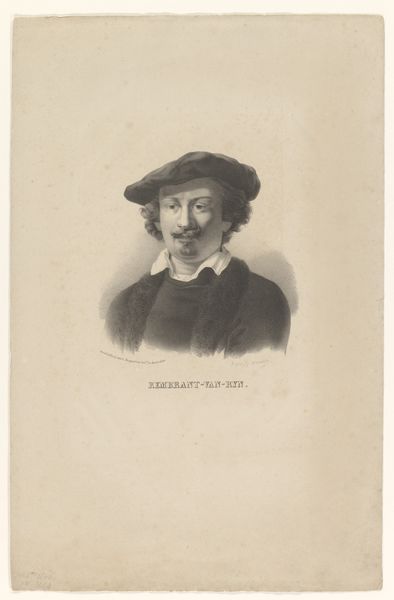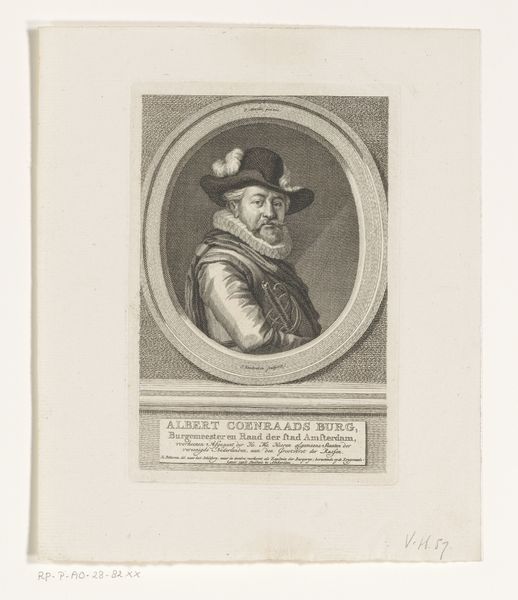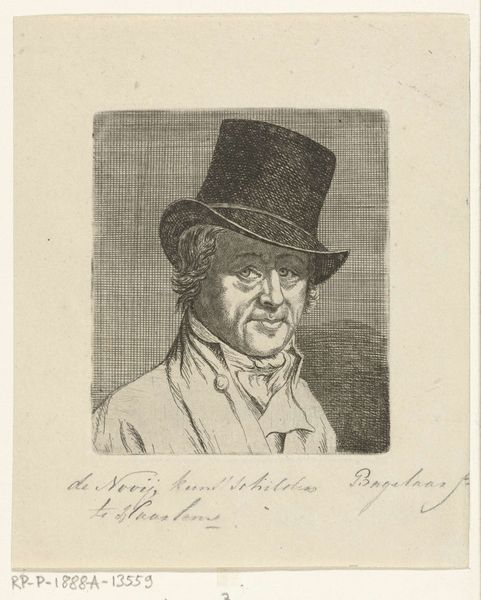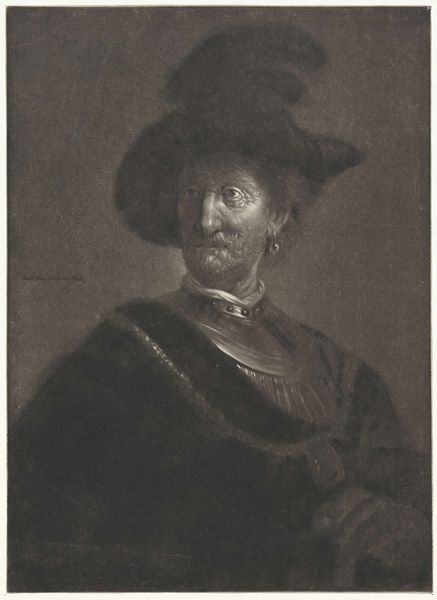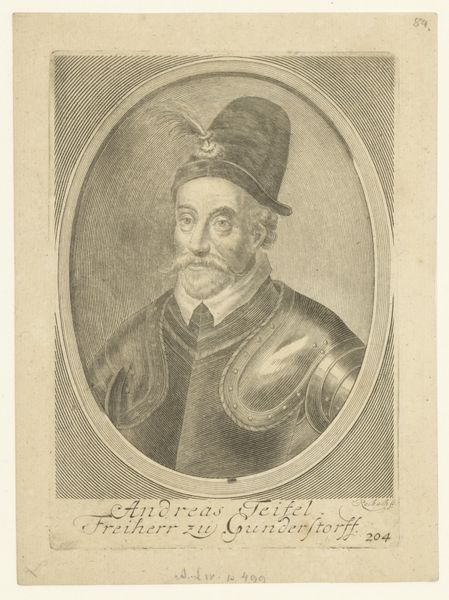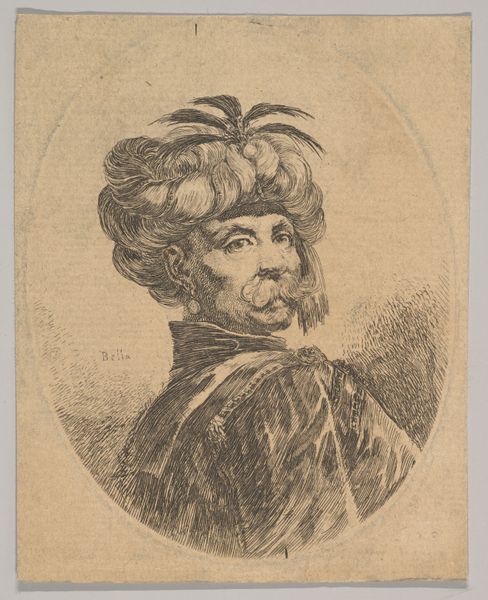
print, etching
#
portrait
#
baroque
# print
#
etching
#
realism
Dimensions: height 182 mm, width 133 mm
Copyright: Rijks Museum: Open Domain
Curator: Standing before us, we see "Portret van een man, mogelijk Harmen Gerritsz. van Rijn," an etching, likely from between 1673 and 1715, attributed to Nicolaes van Haeften after Rembrandt. Editor: The sepia tones evoke a certain melancholy, a weighty seriousness. He's adorned, but there's an air of unease. Curator: Yes, consider the masterful use of line. Observe how van Haeften employed etching to mimic Rembrandt's characteristic chiaroscuro. The contrast models the man's face, drawing our eye directly to his expression, which you correctly identified. Editor: Who exactly was this man? It feels important. We read "man," but his wealth marks him as one positioned to wield power and social capital, or perhaps just aspiration to power. His clothes seem meant to portray such things. Curator: The sitter is believed to possibly be Harmen Gerritsz. van Rijn, Rembrandt's father, though it isn't verified. Notice, too, the textures achieved, particularly in the rendering of his hat and cloak. The layering and cross-hatching generate the illusion of three-dimensionality within a two-dimensional medium. Editor: The original context is significant. A portrait, especially during the Baroque period, was a potent tool of social assertion and class distinction. He presents himself deliberately, with calculated purpose. It also invites speculation – does the melancholic mood imply something about his inner life, perhaps disillusionment or regret? Curator: Perhaps. What intrigues me is the work’s capacity to encapsulate broader artistic trends. Baroque emphasis on drama, captured here through light and shadow and rendered skillfully using etching to make a beautiful, compelling portrait, from an artist who deeply understands tonal and gestural quality. Editor: It speaks to the relationship between artistic legacy and individual expression. In etching Rembrandt, does he pay homage, engage in a dialogue across time and perhaps also attempt to reclaim agency within that imposing shadow? Curator: I’d agree. By imitating but also iterating, it stands in conversation to history while innovating, forging its unique contribution. Editor: This piece gives such insights into social hierarchy and how individuals strategically construct themselves. Curator: A subtle example that underscores not only its inherent artistry, but also how the language of art reflects broader social currents.
Comments
No comments
Be the first to comment and join the conversation on the ultimate creative platform.
